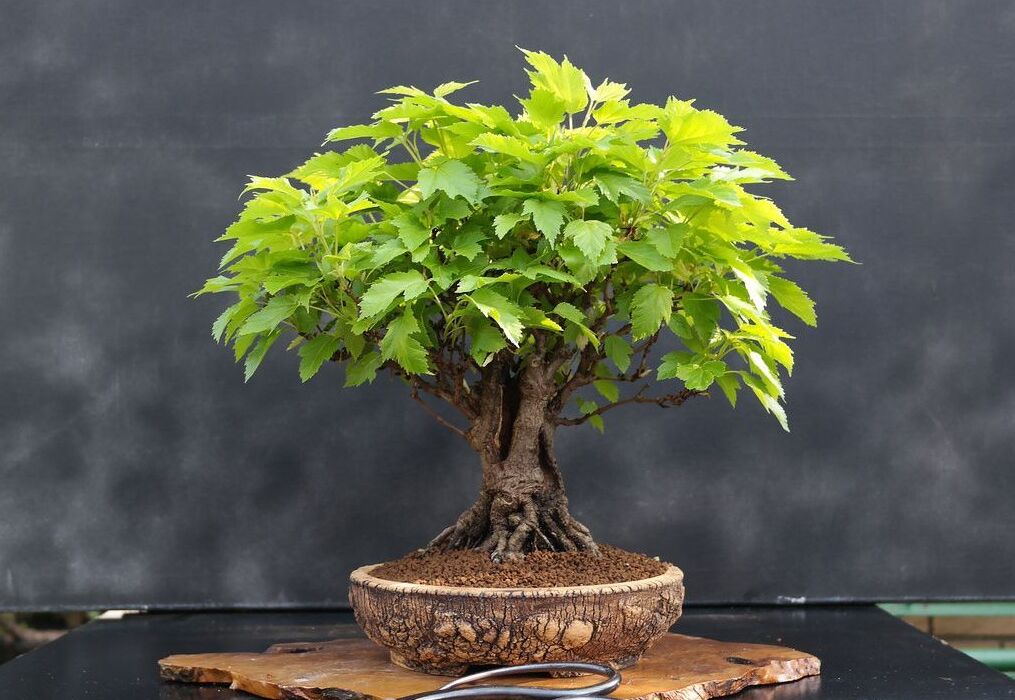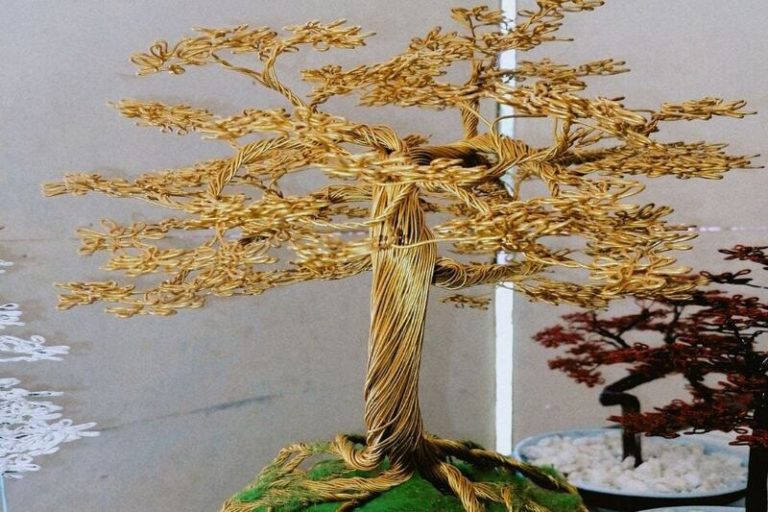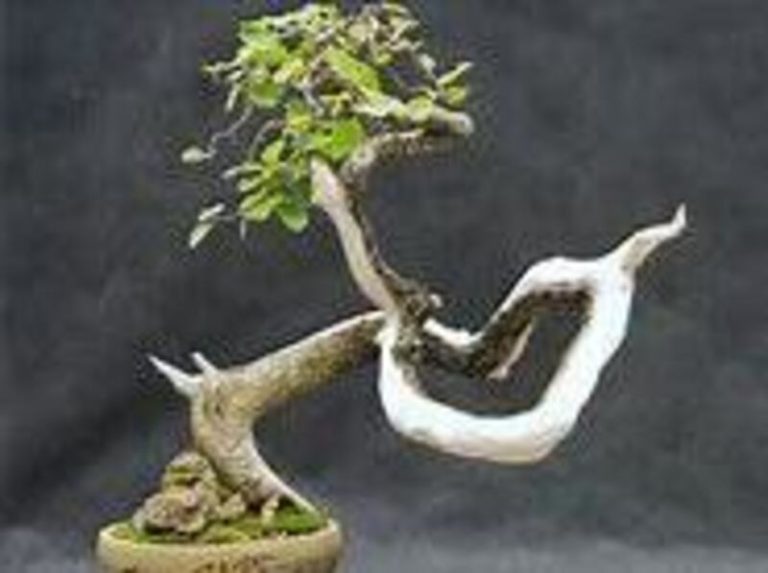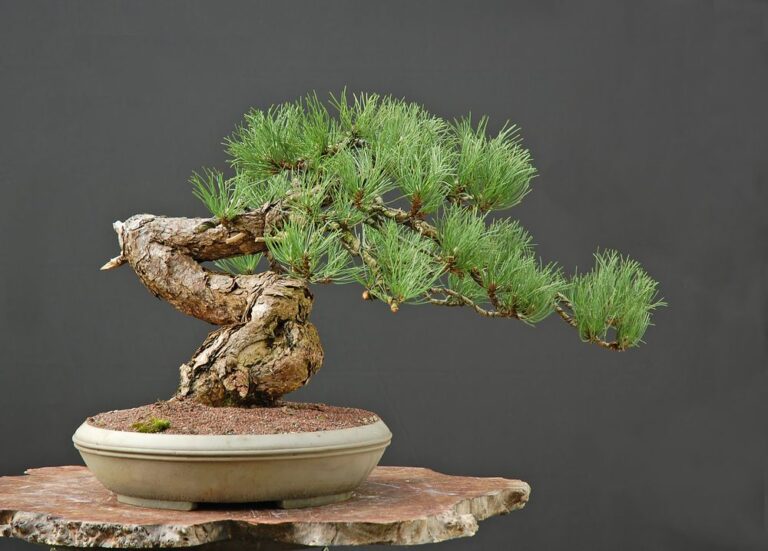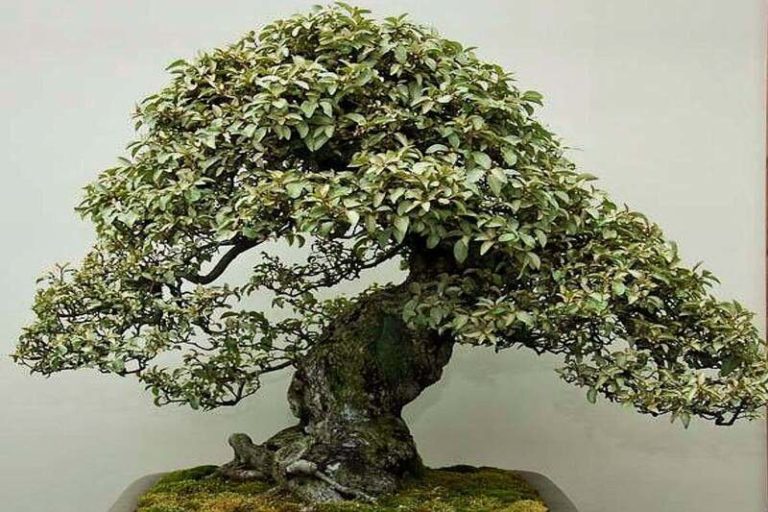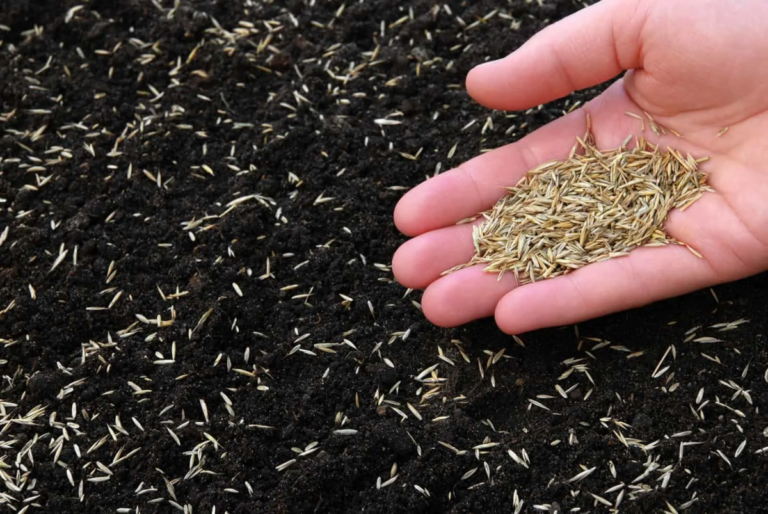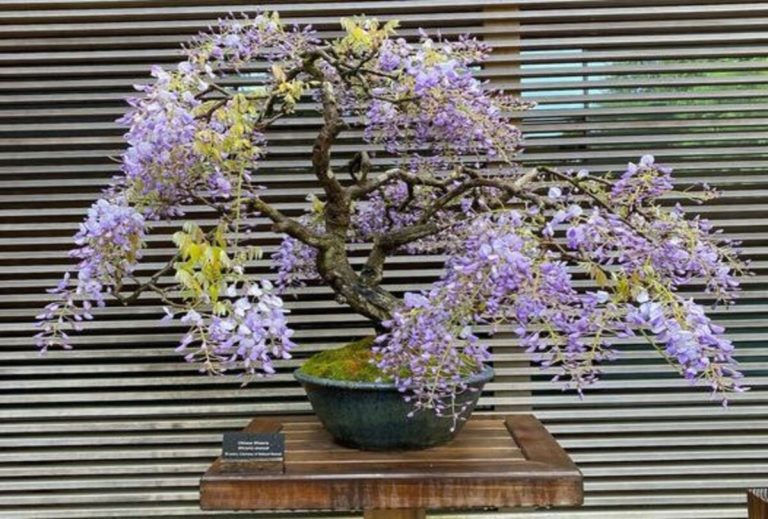Amur Maple Bonsai: The Cold Hardy Maple Nobody Knows About
The Tree That Survived My Freezing Winter
In the winter of 2017, we had a cold snap in my area that dropped temperatures to negative 20°F for three nights straight. I was worried sick about my bonsai trees. I had wrapped most of them in burlap and buried the pots in mulch, but I ran out of materials and left one tree exposed on my bench.
That tree was my Amur Maple.
I thought I had killed it. When spring came, I was afraid to even look at it. But when the weather warmed up, tiny red buds started appearing all over the branches. Not only did it survive, it had the best spring growth of any tree in my collection that year.
That experience taught me something important. Amur Maple (Acer ginnala or Acer tataricum subsp. ginnala) is one of the toughest, most underrated bonsai species out there. While everyone obsesses over Japanese maples, this Russian and Asian native quietly does everything well and asks for very little in return.
Six years later, I now have three Amur Maples on my bench. They have become some of my favorite trees to work with, and I am going to share everything I have learned about them.
What is an Amur Maple Bonsai?
Amur Maple is a small deciduous tree native to northeastern Asia, including parts of China, Korea, Mongolia, and eastern Russia (near the Amur River, which is where the name comes from). In nature, these trees grow as large shrubs or small trees, usually reaching 15 to 20 feet tall.
For bonsai, Amur Maple offers several amazing characteristics. The leaves are small (1 to 3 inches long), which is perfect for bonsai scale. They are three lobed, giving them that classic maple shape but in a much more manageable size than Japanese maple. The fall color is spectacular, ranging from bright yellow to orange to deep red. The bark develops interesting texture as the tree ages. And most importantly, they are incredibly tough and cold hardy.
An Amur Maple bonsai is basically a miniature version of those hardy northern maples. The tree goes through dramatic seasonal changes. In spring, you get pretty reddish new growth. In summer, the leaves are bright green. In fall, the whole tree turns brilliant colors. In winter, the bare branch structure shows the work you have done styling it.
Unlike Japanese maples, which can be fussy and require careful protection, Amur Maples are almost indestructible. They tolerate cold, heat, poor soil, drought, and beginners making mistakes.
History and Cultural Significance
Amur Maple does not have the long bonsai history that Japanese maple has. In Japan, it is not traditionally used for bonsai because they have better native maples available. But in colder parts of the world (like northern United States, Canada, and northern Europe), Amur Maple has become increasingly popular because it is one of the few maples that can handle really cold winters.
The species has been used in landscaping in cold climates since the early 1900s. Russian and Mongolian gardeners have known about its toughness for centuries. It was brought to North America as a hardy landscape tree and has naturalized in some areas (it is even considered slightly invasive in some northern states because it is so tough).
In bonsai, Amur Maple started gaining attention in the 1980s and 1990s as American and European practitioners looked for alternatives to Japanese maple that could survive harsh winters. Bonsai artists in places like Minnesota, Wisconsin, Canada, and Scandinavia realized this tree had everything they needed. It was cold hardy, had small leaves, developed good branch structure, and showed spectacular fall color.
I first learned about Amur Maple from a member of my local bonsai club who lives in northern Minnesota (zone 3). He had been trying to grow Japanese maples for years with limited success. They kept dying in winter despite protection. Then he discovered Amur Maple and never looked back. His trees survive Minnesota winters outdoors with minimal protection and look amazing.
What Makes Amur Maple Special for Bonsai
After six years working with this species (I currently have three trees), here is what I have learned:
Incredible Cold Hardiness
This is the big one. Amur Maple is hardy to zone 2, which means it can handle temperatures down to negative 50°F. Think about that. Negative 50 degrees. Nothing else in the bonsai world comes close to that level of cold tolerance.
For bonsai growers in cold climates, this is a game changer. You can leave these trees outside all winter with minimal protection. While your friends are building elaborate cold frames and heated greenhouses for their Japanese maples, your Amur Maple just sits there taking the punishment and comes back stronger in spring.
My trees stay outside year round in zone 7a. They have survived everything from negative 10°F to 105°F without any damage.
Small Leaves That Get Even Smaller
The natural leaf size is already pretty small (1 to 3 inches), but with proper techniques (which I will explain later), you can get them down to 0.5 to 1.5 inches. That is perfect for even small bonsai.
The leaf shape is also great. They are three lobed, giving you that classic maple look without the complexity of the deeply cut leaves on Japanese maple. They are easier to photograph, easier to wire around, and just plain easier to work with.
Amazing Fall Color
This might be the most spectacular feature. In fall, Amur Maple leaves turn intense colors. On my trees, I have seen bright yellow, orange, scarlet red, and deep crimson, sometimes all on the same tree at the same time. The color intensity rivals any Japanese maple.
And unlike some trees where fall color is unreliable, Amur Maple delivers every single year. Cold nights and sunny fall days make the colors even better, but even in mild autumns, you get good color.
Fast Growth and Development
Amur Maple grows vigorously, which means faster development. If you are building trunk thickness, developing branches, or recovering from styling mistakes, Amur Maple bounces back quickly.
This fast growth can be a challenge for maintaining refined bonsai (you need to prune frequently), but for beginners or anyone developing trees, it is a huge advantage. Where Japanese maple might take 10 years to develop certain characteristics, Amur Maple can get there in 5 to 7 years.
Flexible and Forgiving
Amur Maple tolerates mistakes. Forgot to water for a couple days? It will be fine. Pruned too aggressively? It will bounce back. Wired too tight and left some scars? It will heal. Repotted at less than ideal timing? It will survive.
I have made every mistake possible with these trees, and they all survived and thrived. That forgiveness is perfect for learning.
Back Buds Like Crazy
One of the challenges with maple bonsai is getting buds to form on older wood. Amur Maple back buds readily. If you cut back to older wood, it will usually push new buds within weeks. This makes it much easier to develop fine branch ramification.
My oldest Amur Maple has buds growing from 10 year old wood that I thought was too old to respond. The tree proved me wrong.
Types and Varieties of Amur Maple
Amur Maple has fewer cultivated varieties compared to Japanese maple, but there are a few worth knowing about:
Standard Amur Maple (Acer ginnala or Acer tataricum subsp. ginnala)
This is the species form, what you will find at most nurseries. It has typical three lobed leaves, good fall color, and all the characteristics I have been describing.
Features: Medium green leaves, brilliant fall color (yellow to red), very cold hardy, vigorous growth, suitable for all bonsai styles.
Best for: General bonsai use, all skill levels, cold climate growers.
This is what all three of my trees are. It is the standard for a reason.
Flame Amur Maple (Acer tataricum ‘Flame’)
This is a cultivated variety selected for especially intense fall color. The leaves turn brilliant red orange in fall, living up to the “Flame” name.
Features: Similar to standard Amur but with more reliable bright red fall color, slightly more compact growth.
Best for: Anyone wanting guaranteed spectacular fall display, slightly easier to maintain compact size.
I have not personally grown this variety, but I have seen them at shows and the fall color is noticeably more intense than standard Amur Maple.
Embers Amur Maple (Acer tataricum ‘Embers’)
Another selection for fall color, this variety produces deep red to purple fall foliage. New spring growth also has reddish tints.
Features: Deeper, darker fall color, interesting spring color, same cold hardiness and vigor as species.
Best for: People wanting darker, richer fall tones rather than bright oranges and yellows.
Compactum Forms
Some nurseries offer compact or dwarf selections of Amur Maple. These naturally grow more slowly and densely, which can be helpful for bonsai.
Features: Slower growth (still faster than Japanese maple), naturally more compact, may have slightly smaller leaves.
Best for: Shohin (small) bonsai, anyone wanting less aggressive growth to manage.
For most people, standard Amur Maple from any landscape nursery works perfectly. The species form has all the characteristics you need for excellent bonsai.
How to Grow an Amur Maple Bonsai
Let me walk you through what actually works, based on six years of real experience.
Getting Starting Material
You have several good options:
Option 1: Landscape Nursery Stock (My Top Recommendation)
This is how I started all three of my trees. Most landscape nurseries in cold climates carry Amur Maple because it is a popular hardy landscaping plant. You can usually find 3 to 5 year old plants in one to five gallon containers for $15 to $40.
What to look for: Some trunk movement or taper (avoid perfectly straight trunks), low first branch (within lower third of height), good root spread at the base, healthy foliage with no disease.
Good things: Very affordable, readily available, often already has some trunk thickness, proven to be a strong plant.
Bad things: Branch placement may not be ideal, may need years of development.
I bought my first Amur Maple from a local garden center for $18. Six years later, it is easily worth 10 times that.
Option 2: Field Growing from Small Stock
Buy a small nursery plant (one gallon or smaller) and plant it in the ground or large container for 3 to 5 years to develop trunk thickness quickly.
Good things: Maximum control over development, very fast trunk thickening, affordable.
Bad things: Takes several years, need space to grow it out.
Option 3: Collected Material
Amur Maple can be collected from the wild in areas where it has naturalized, but check legality first. In some areas it is considered invasive and collection is encouraged. In others, you need permission.
Good things: Free, can find interesting character, naturally compact from harsh growing conditions.
Bad things: Lower success rate than nursery stock, legal concerns, may take longer to recover.
I collected one small Amur from a friend’s property where they were clearing invasives. Collection timing in early spring before bud break. The tree survived and is developing nicely.
Option 4: Seed Growing
Amur Maple grows easily from seed. Collect seeds (samaras) in fall, cold stratify them in the refrigerator for 90 to 120 days, then plant in spring.
Good things: Very affordable, fun project, maximum control from the beginning.
Bad things: Takes 10 to 15 years to develop anything resembling a bonsai, requires patience.
Soil Mix That Works
Amur Maple is not picky about soil, but better drainage means healthier roots and better growth.
My mix for established trees: 50% akadama, 30% pumice, 20% composted bark
For trees in development (growing for thickness): 40% akadama, 25% pumice, 20% lava rock, 15% composted bark
The higher organic content for developing trees encourages faster growth. For refined trees, I use less organic material for better control.
Key rule: Water should drain through in a few seconds. If it sits on the surface, you need more drainage.
Location and Climate Needs
Amur Maple is very adaptable but does have some preferences:
Sunlight: Full sun to partial shade. In hot climates (zones 7 to 9), afternoon shade is beneficial to prevent leaf scorch. In cooler climates (zones 3 to 6), full sun all day is fine.
Temperature: Hardy from zone 2 to zone 8. Can handle extreme cold and moderate heat. In very hot climates (zones 9+), they struggle in intense summer heat.
Winter Dormancy: Amur Maple needs winter cold for dormancy. They need several weeks of temperatures below 45°F to properly rest. This makes them unsuitable for tropical or subtropical climates.
My trees get full sun from sunrise until about 2pm, then shade the rest of the afternoon. This works perfectly in zone 7a where summer temperatures reach 95 to 100°F.
Watering Strategy
Amur Maple likes consistent moisture but tolerates both dry and wet conditions better than Japanese maple.
My approach: Water when the soil surface is dry but slight moisture remains 1 inch down. For Amur Maple in proper bonsai soil, this usually means daily watering in summer, every 2 to 3 days in spring and fall, and much less frequently in winter.
Signs of correct watering: Strong growth, bright green leaves, no wilting or leaf scorch, vibrant fall color.
Signs of under watering: Leaf edges turn brown and crispy, leaves may drop prematurely, growth slows significantly.
Signs of over watering: Yellowing leaves, weak floppy growth, fungal problems, root rot.
The good news is Amur Maple tolerates occasional drought better than Japanese maple. I have forgotten to water mine for two days in summer heat, and they just wilted slightly then recovered fully when watered. Japanese maple would have dropped leaves and possibly died.
Fertilizing Schedule
Amur Maple responds well to regular fertilizing, especially during development.
My fertilizing program:
Spring (March to May): Balanced organic fertilizer (5 5 5 or similar) applied every 2 to 3 weeks
Summer (June to August): Continue balanced fertilizer but reduce frequency during extreme heat
Late Summer (August): Switch to low nitrogen (0 10 10) for one application to help harden growth
Fall (September): One final balanced fertilizer application in early September
Winter (October to February): No fertilizer during dormancy
I use organic pellet fertilizer (Biogold, Dr. Earth, or similar) because it releases slowly. For trees in heavy development, I also use liquid fertilizer every two weeks during the growing season.
Mistake I made: I over fertilized one tree in its first year, causing excessive elongation and weak branches. Now I am more moderate with feeding, especially on refined trees.
Pruning and Branch Development
This is where Amur Maple really shines. It responds incredibly well to pruning.
Basic Pruning Strategy:
Amur Maple grows strongly from spring through mid summer. Your job is to control that growth while developing fine branch structure.
Spring Pruning: After the first flush of growth extends and hardens (usually late May to early June), cut back new growth to 1 to 2 leaf pairs. This encourages back budding and develops ramification.
Summer Pruning: Continue to prune extended growth every 3 to 4 weeks throughout summer. Remove entirely any shoots growing in wrong directions.
Fall Pruning: Stop pruning by late August to allow the final growth to harden before winter.
Major Structural Pruning: Do this in late winter or very early spring before buds swell. This is when you make big changes to branch structure.
Defoliation Technique (Advanced):
On healthy, vigorous trees, you can do partial or full defoliation in early June to encourage smaller second generation leaves and increase ramification.
Full defoliation: Remove all leaves in early June, leaving just the leaf stems (petioles). New smaller leaves will emerge within 2 to 3 weeks.
I successfully defoliated my strongest tree last year. The second flush of leaves was noticeably smaller, and the tree pushed dozens of new buds. But only do this on completely healthy, vigorous trees.
Wiring Techniques
Amur Maple branches wire well but need some care.
Wiring Guidelines:
Best timing: Late spring to early summer after leaves have fully opened but before wood hardens too much, or late fall after leaves drop.
Wire type: Aluminum wire for most work. Copper wire can be used for thick branches but watch for scarring.
Technique: Wire carefully around leaves if doing summer wiring. Apply wire at 45 degree angle. Use appropriate thickness.
Duration: Amur Maple grows fast and branches thicken quickly. Check wire every 2 to 3 weeks in growing season. Remove before it cuts in (usually 2 to 4 months maximum).
Protection: Amur Maple bark is relatively thin and scars easily. Use raffia or tape under wire on important branches.
I have gotten permanent wire scars on two trees from leaving wire on too long (just 4 months in one case). Now I am very careful to check and remove wire before it bites.
Repotting Needs
Amur Maple develops vigorous root systems and benefits from regular repotting.
Repotting Schedule:
Young trees in development (under 10 years): Every 1 to 2 years
Mature trees (10 to 20 years): Every 2 to 3 years
Old refined trees: Every 3 to 4 years
Best timing: Early spring just before buds swell, or very late winter. In my climate (zone 7a), this is mid March to early April.
Repotting Process:
Remove tree from pot carefully. Use root hook to comb out outer roots. Trim circling roots and prune up to 30 to 40% of root mass (Amur Maple tolerates aggressive root work). Remove old soil from bottom and sides. Position in pot with fresh soil. Water thoroughly and keep in shade for 1 to 2 weeks while roots recover.
Unlike Japanese maple, which needs very careful root work, Amur Maple bounces back quickly from aggressive root pruning. I have removed 40% of the root mass on vigorous trees without problems.
Benefits of Growing Amur Maple Bonsai
After six years with this species, here is what I truly value:
Perfect for Cold Climates
If you live anywhere with harsh winters (zones 2 to 6), Amur Maple is one of the best deciduous bonsai you can grow. While other people are struggling to keep Japanese maples alive, your Amur Maples just keep thriving.
Spectacular Seasonal Interest
Spring: Pretty reddish new growth Summer: Bright green foliage Fall: Incredible color display Winter: Interesting branch structure
You get four completely different looks throughout the year. The tree is never boring.
Fast Development
The vigorous growth means you can develop bonsai characteristics faster. If you are impatient (like me), this is a huge benefit.
My trees have developed trunk thickness and branch ramification in half the time it would take with Japanese maple.
Beginner Friendly
The forgiveness factor makes this an ideal species for learning. You can make mistakes and the tree survives. You can practice techniques without fear of killing your material.
Readily Available and Affordable
Unlike specialty Japanese maples or imported material, Amur Maple is available at most garden centers in cold climates. You can start with quality material for $20 to $40.
Reliable Fall Color
Some trees have unreliable fall color depending on weather. Amur Maple delivers brilliant color every single year. It is one of the most reliable fall color trees in my collection.
Good for All Sizes
Amur Maple works for everything from shohin (small bonsai under 8 inches) to large bonsai over 30 inches. The leaf size scales well at any tree size.
Styling and Design Philosophy
The best Amur Maple bonsai I have seen share certain characteristics:
Embrace the Vigorous Growth
Do not fight the tree’s natural energy. Use it. Let the tree grow strongly in spring to thicken trunk and branches, then control it through summer pruning.
Trying to make Amur Maple look like a refined, super fine ramified Japanese maple is fighting against its nature. Instead, aim for a more natural, slightly wilder aesthetic that matches the tree’s vigorous character.
Showcase the Seasonal Changes
Design your tree to look good in all four seasons, not just summer. Consider how the branch structure will look in winter. Think about fall color display. Plan the spring composition.
I photograph my trees at least once each season to track how they look year round.
Keep It Natural
Amur Maple looks best in naturalistic styles. Informal upright, slanting, windswept, and forest plantings all work beautifully. Formal upright can work but looks less natural.
My three trees are all informal upright with various degrees of movement and character. That is what suits the species.
Allow Some Wildness
Perfect symmetry and ultra refined ramification look forced on Amur Maple. Allow some irregularity, some unexpected branches, some asymmetry. This matches how the tree grows in nature and looks more convincing.
Pot Selection
Amur Maple looks good in both glazed and unglazed pots. Colors that work well: Browns, grays, subtle greens, blue grays. The pot should complement but not compete with the fall color display.
I use unglazed brown pots for two trees and a subtle gray blue glazed pot for one. All work well.
Seasonal Care Guide
Spring (March to May)
Spring is the most active season. Buds swell, leaves emerge, growth explodes.
Tasks: Repot if scheduled (before buds open), begin regular fertilizing when buds swell, do major structural pruning before leaves emerge, start summer watering schedule as temperatures warm, watch for pests (aphids love new growth).
What to expect: New growth starts reddish then turns green. Growth is extremely vigorous, especially early in season. Be prepared to prune frequently.
Summer (June to August)
Active growth continues through early summer, then slows in heat.
Tasks: Regular pruning to maintain shape (every 3 to 4 weeks), consistent watering (often daily in hot weather), continue fertilizing but reduce in extreme heat, consider defoliation on strong trees (early June only), wire new growth if needed, watch for leaf scorch in extreme heat (provide afternoon shade if necessary).
What to expect: Growth is strong through June then slows in July and August. Leaves should be healthy and green. In very hot weather, some leaf edges may brown (this is normal).
Fall (September to November)
Growth slows dramatically. The big show is fall color.
Tasks: Stop pruning by late August, final fertilizer application in early September, reduce watering as temperatures drop and growth stops, enjoy the fall color display, clean up fallen leaves from pot surface, prepare for winter.
What to expect: As nights get cooler and days stay sunny, leaves begin changing color (usually late September to October in my area). Color peaks for 2 to 3 weeks, then leaves drop. After leaf drop, you can see the branch structure clearly.
Winter (December to February)
Trees are completely dormant with no leaves.
Tasks: Minimal to no watering (only if soil completely dries out), protect roots in zones 5 and colder (though Amur Maple is incredibly hardy), major structural wiring can be done now, study branch structure and plan next year’s development, clean and organize your bonsai area.
What to expect: Tree looks completely dormant. No leaves, no active growth. Buds are visible on branches but remain closed. This rest period is essential for next year’s growth.
Common Problems and Solutions
Leaf Scorch (Brown Leaf Edges)
Causes: Too much direct sun in hot weather, under watering, or wind damage
Solution: Provide afternoon shade in hot climates. Ensure consistent watering. Protect from hot, dry winds. Some minor leaf edge browning in extreme heat is normal and not harmful.
Aphids on New Growth
Causes: Aphids are attracted to tender new spring growth
Solution: Spray with strong water stream to knock them off. Use insecticidal soap if infestation is heavy. Encourage natural predators (ladybugs). In most cases, the tree outgrows the problem quickly.
I get aphids every spring on new growth. A strong spray with the hose twice a week keeps them under control without chemicals.
Weak Fall Color
Causes: Too much nitrogen late in season, lack of cold nights, or too much shade
Solution: Stop nitrogen fertilizer after June. Ensure the tree gets cool nights in fall (below 50°F). Make sure tree gets adequate sun. Fall color is also genetically variable, some trees just have better color than others.
Leggy Growth with Long Internodes
Causes: Too much fertilizer, not enough light, or insufficient pruning
Solution: Reduce fertilizer. Increase sun exposure. Prune more frequently to encourage back budding and compact growth.
Wire Scars
Causes: Leaving wire on too long (Amur Maple grows and thickens branches very fast)
Solution: Check wire every 2 to 3 weeks during growing season. Remove before it cuts in. If scars happen, they will heal in 2 to 4 years. Use raffia or tape under wire on important branches.
Slow Growth After Repotting
Causes: Too much root pruning, poor timing, or transplant shock
Solution: Be patient. Keep tree in partial shade for 2 to 3 weeks after repotting. Water carefully (not too much or too little). Do not fertilize for 3 to 4 weeks. The tree should recover and show strong growth by late spring.
Branch Die Back
Causes: Insufficient light to interior branches, or branch weakness from lack of vigor
Solution: Thin foliage to let light reach interior. Allow some growth on weak branches to strengthen them. Sometimes you need to remove weak branches entirely and work with stronger ones.
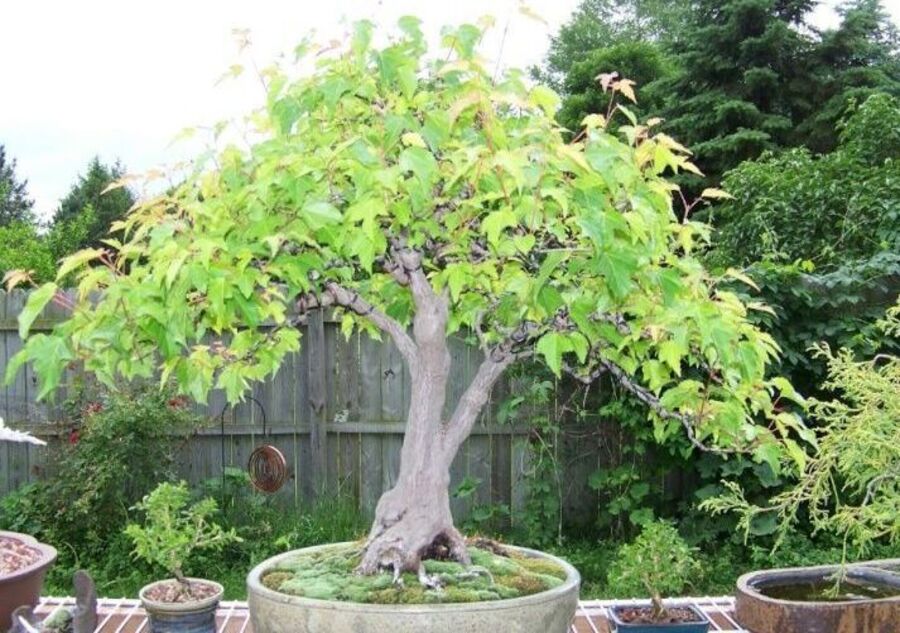
Amur Maple Bonsai Care Sheet
| Aspect | Care Guidelines |
|---|---|
| Light | Full sun to partial shade. Afternoon shade beneficial in hot climates. |
| Water | When soil surface dry but moisture remains 1 inch down. Daily in summer, much less in winter. |
| Soil | Well draining: 50% akadama, 30% pumice, 20% composted bark. Tolerates variety of mixes. |
| Fertilizer | Balanced organic fertilizer spring through summer, every 2 to 3 weeks. None in winter. |
| Temperature | Hardy to zone 2 (negative 50°F). Best in zones 3 to 8. Struggles in very hot climates. |
| Humidity | Tolerates wide range. Not particular about humidity. |
| Repotting | Every 1 to 2 years (young trees), 2 to 3 years (mature). Early spring before bud break. |
| Pruning | Prune new growth back to 1 to 2 leaves every 3 to 4 weeks during growing season. Major pruning late winter. |
| Wiring | Spring or fall. Check every 2 to 3 weeks. Remove after 2 to 4 months maximum to avoid scars. |
| Pests | Aphids on new growth. Occasionally scale or spider mites. Generally pest resistant. |
| Winter Care | Very hardy. Minimal protection needed even in zones 3 to 5. Can stay outdoors in all but extreme cold. |
Who Should (and Should Not) Grow Amur Maple
After six years with this species, here is my honest opinion:
Amur Maple is Great For:
Cold climate bonsai growers (zones 2 to 6), beginners learning deciduous bonsai care, people who want spectacular fall color every year, anyone wanting fast development and quick results, practitioners looking for Japanese maple alternative, people in areas with temperature extremes, students learning bonsai techniques (very forgiving).
Amur Maple is NOT Great For:
Tropical or subtropical climate growers (zones 10 to 11, needs winter cold), very hot climate growers (zones 9+, struggles in intense heat), people wanting only ultra refined, super delicate looking bonsai, indoor bonsai enthusiasts (must be grown outdoors).
The Bottom Line
If you live in a cold climate, want a beautiful deciduous bonsai that actually survives your winters, appreciate spectacular fall color, and want a species that forgives mistakes while you learn, Amur Maple is perfect.
It was perfect for me. My $18 garden center tree from 2017 has become one of my favorite bonsai. It survives everything, grows vigorously, and puts on an amazing show every fall.
Six years in, I am still learning from these trees and enjoying every season with them.
Resources and Further Learning
Books: “Bonsai Techniques I and II” by John Naka (covers deciduous tree techniques applicable to Amur Maple), “The Complete Book of Bonsai” by Harry Tomlinson (includes maple cultivation), “Bonsai for Beginners” by Larry Student (good basics).
Online Resources: Bonsai Empire (comprehensive care guides for maples), Cold Climate Bonsai forums (specific advice for cold hardy species), Bonsai Nut forums (search “Amur Maple” for discussions), YouTube channels focusing on deciduous bonsai.
People to Follow: Anyone focusing on cold climate bonsai or deciduous trees. Many practitioners in northern US, Canada, and Scandinavia work extensively with Amur Maple.
Where to See Examples: Regional bonsai shows in cold climate areas often feature Amur Maples. Check local bonsai clubs in Minnesota, Wisconsin, Michigan, New England, and Canada.
Final Thoughts
The freezing winter of 2017 taught me something valuable. While I was worrying about protecting my “important” Japanese maples and junipers, the Amur Maple I left exposed proved it did not need my help.
That is the essence of this species. It does not need fancy care or special treatment. It just grows, survives, and thrives with basic attention.
My three Amur Maples will never win major national shows. They are not exotic or prestigious. But they give me four seasons of interest, spectacular fall displays every year, and they tolerate all my mistakes while I learn.
For a student learning bonsai, for anyone in a cold climate, or for practitioners who want beautiful results without constant worry, Amur Maple is a gift.
Give it good soil, adequate water, regular pruning, and it will reward you with decades of reliable beauty.
That $18 tree from the garden center taught me that sometimes the best bonsai material is not the most exotic or expensive. Sometimes it is the tough, reliable, underappreciated species that everyone else overlooks.
Amur Maple is that species.
Frequently Asked Questions
Q: Where can I buy Amur Maple for bonsai?
A: Most landscape nurseries in cold climates carry Amur Maple as a hardy landscaping plant. You can buy them in 1 to 5 gallon containers for $15 to $40. Some bonsai nurseries also carry them as pre bonsai material. Online sources include most native plant nurseries and some bonsai retailers.
Q: Can I grow Amur Maple bonsai indoors?
A: No. Amur Maple is a deciduous tree that needs winter dormancy. It requires several weeks of cold temperatures (below 45°F) to rest properly. Trying to grow it indoors will eventually kill it. It must be grown outdoors year round.
Q: How long does it take to develop an Amur Maple bonsai?
A: From landscape nursery stock, you can have a decent looking bonsai in 4 to 6 years with proper techniques. A refined, show quality tree takes 10 to 15 years. Amur Maple develops faster than Japanese maple due to its vigorous growth.
Q: What is the difference between Amur Maple and Japanese Maple for bonsai?
A: Amur Maple is much more cold hardy (zone 2 vs zone 5), grows more vigorously, has simpler three lobed leaves (vs deeply cut leaves), is more forgiving of mistakes, and is less expensive. Japanese Maple has more refined growth, more variety in leaf shapes and colors, and longer bonsai tradition. Both are excellent but suited to different climates and skill levels.
Q: When should I prune my Amur Maple bonsai?
A: Do major structural pruning in late winter before buds open. Throughout the growing season (spring and summer), prune new growth back to 1 to 2 leaves every 3 to 4 weeks. Stop pruning by late August to let the final growth harden before winter.
Q: How often should I water my Amur Maple bonsai?
A: Water when the soil surface is dry but moisture remains about 1 inch down. In summer, this usually means daily. In spring and fall, every 2 to 3 days. In winter after leaves drop, much less frequently, only to prevent complete drying. Always check the soil rather than watering on a schedule.
Q: Can I do full defoliation on Amur Maple?
A: Yes, but only on completely healthy, vigorous trees. Do it in early June after the first flush of growth has fully hardened. Remove all leaves but leave the leaf stems (petioles). New smaller leaves will emerge within 2 to 3 weeks.
Also Read:

